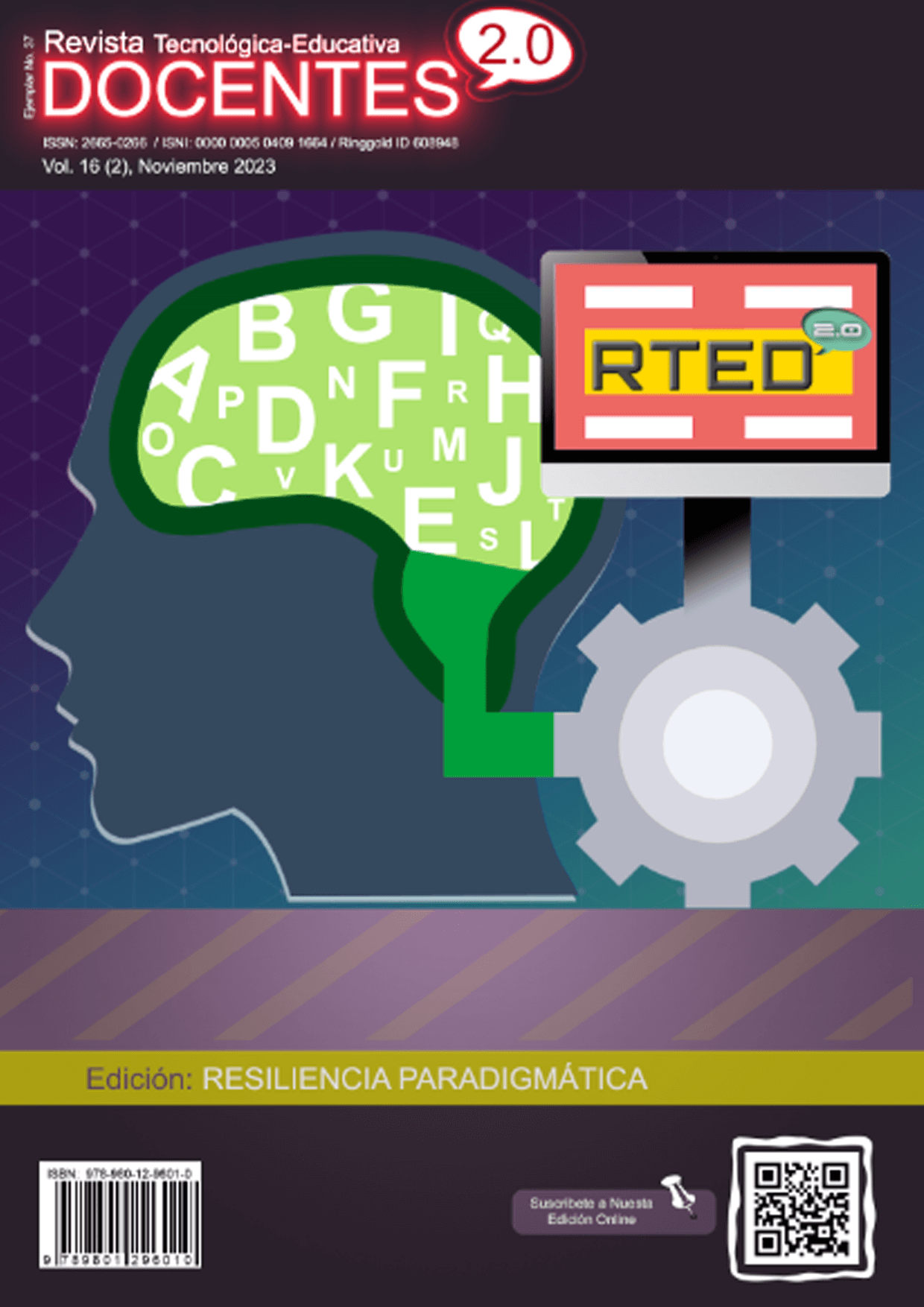Virtual Learning Object directed to the Teaching and Learning of the Binary System
 DOI:
https://doi.org/10.37843/rted.v16i2.382
DOI:
https://doi.org/10.37843/rted.v16i2.382
Main Article Content
Abstract
Learning is an objective of education, whose process is part of acquiring theoretical and practical knowledge through the design and implementation of teaching-learning strategies, together with personal, social, and cultural experience. The research's objective was to create a Virtual Learning Object (OVA) directed to the teaching-learning of the binary system. The research was based on the inductive method, positivist paradigm, quantitative approach, quasi-experimental design, exploratory type, and longitudinal cut. The OVA was presented to 15 students in the 8th semester of the Computer Engineering career at the Valle de Chalco University Center (CU) belonging to the Autonomous University of the State of Mexico (UAEMex). Satisfactory results were obtained in the questionnaire, which was applied to the students; they indicated that the OVA was to their liking, friendly, creative, and interactive, and they managed to acquire new knowledge or review the existing ones about the binary system.
Downloads
Metrics
Article Details

This work is licensed under a Creative Commons Attribution-NonCommercial-NoDerivatives 4.0 International License.
Those authors who have publications in our journal accept the following terms:
- When a work is accepted for publication, the author retains rights of reproduction, distribution of his/her article for exploitation in all countries of the world in the format provided by our magazine and any other magnetic medium, optical, and digital.
- Authors will retain their copyright and guarantee the journal the right first to publish their work, which will be simultaneously subject to the Creative Commons Acknowledgment License (Attribution-NonCommercial-NoDerivatives 4.0 International (CC BY-NC-ND 4.0)). That allows third parties to copy and redistribute the material in any medium or format, under the following conditions: Acknowledgment - You must properly acknowledge authorship, provide a link to the license, and indicate if any changes have been made. You may do so in any reasonable way, but not in a way that suggests you have the licensor's endorsement or receive it for your use. NonCommercial - You may not use the material for a commercial purpose. NoDerivatives - If you remix, transform, or build from the material, you cannot broadcast the modified material. There are no additional restrictions - You cannot apply legal terms or technological measures that legally restrict you from doing what the license allows.
- Authors may adopt other non-exclusive license agreements to distribute the published version of the work (e.g., deposit it in an institutional archive or publish it in a monographic volume) provided that the initial publication in this journal is indicated.
- Authors are allowed and recommended to disseminate their work through the Internet (e.g., in institutional telematic archives, repositories, libraries, or their website), producing exciting exchanges and increasing the published work's citations.
- Request of withdrawal an article has to be done in writing by the author to the Editor, becoming effective after a written response from the Editor. For this purpose, the author or authors will send correspondence via e-mail: [email protected].
- The author will not receive financial compensation for the publication of his work.
- All Docentes 2.0 Journal publications are under the Open Journal System (OJS) platform at: https://ojs.docentes20.com/.
References
Abreu, J. L. (2014). El método de la investigación Research Method. Daena: International Journal of Good Conscience, 9(3), 195- 204. https://n9.cl/a09u
Acuña, M. (2023). Objetos de Virtuales de Aprendizajes en línea. [e+ evirtualplus]. https://shre.ink/l8WF
Albarracín, C. Z., Hernández, C. A., & Rojas, J. P. (2020). Objeto virtual de aprendizaje para desarrollar las habilidades numéricas: Una experiencia con estudiantes de educación básica. Panorama, 14(26). https://n9.cl/ynrif DOI: https://doi.org/10.15765/pnrm.v14i26.1486
Almiñana, A. (2021). Cuál es el origen del sistema binario – Historia y Funciones. [Aprende Cómo Hacerlo]. https://n9.cl/u4wwr
Articulate 360. (2023). Storyline 3: Creative interactive courses for any device. [articulate]. https://n9.cl/j8qwh
Ausubel, D. et al. (2012). Psicología Educativa. Un punto de vista cognoscitivo. Trillas.
Binario. (2020). Historia del Sistema binario. Globedia. https://n9.cl/emqkg
Briceño, G. (2018). Sistema binario. [Euston96]. https://n9.cl/jpkon
Castro, C. A. (2016). Historia de los números binarios. [Aula Fácil]. https://n9.cl/rt3k0
Conde, C. (2006). Guía Pedagógica. Pedagogía: Todo sobre pedagogía y educación. https://n9.cl/hxdl5s
Editorial Etecé. (2022). Sistema binario. [Concepto]. https://n9.cl/q48am
Ferreres, V. S., & González, Á. P. (Eds.). (2006). Evaluación para la mejora de los centros docentes: Construcción del conocimiento (1. ed.). Praxis.
Huerta, G. (2020). Ingeniería Colectiva: Números Binarios. [Siticed.com]. https://n9.cl/bjdcy
Kuc, R. F. (2012). Descripción de Un Sistema Microprogramable. [SCRIBD]. https://n9.cl/78gpq
López, J. (2020). El ADN de nuestros ordenadores tiene más de 4400 años: esta es la sorprendente historia del sistema binario. [Xataka]. https://n9.cl/ime29
Ortiz, D. (2014). Sistema binario: unos y ceros a través de la historia. [ThinkBig]. https://n9.cl/d56h4
Sánchez, J., García C., Juárez Y., & Sánchez S. (2018). Diseño Instruccional ADDIE como Metodología Pedagógica para la enseñanza-aprendizaje a través de Realidad Aumentada. Tecnologías y Aprendizaje: Investigación y Practica, en Prieto M., Pech S. y Francesa A. (eds), pp. 491-499, CIATA.org-UCLM.
Seguidores. (2023). ¿Qué es el Sistema Binario?: Operaciones, Ejemplos y más. [Seguidores.online]. https://n9.cl/vb602
Vargas, G. (2017). Recursos educativos didácticos en el proceso enseñanza aprendizaje. Revista Cuadernos, 58(1), pp. 68-74. https://n9.cl/3losk






